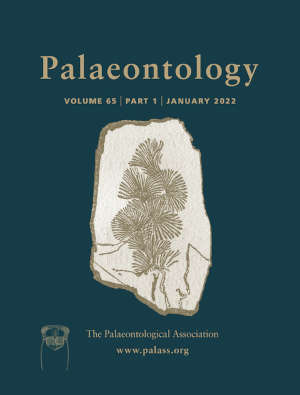Reg. Charity No. 1168330

Abstract A quantitative approach to plant taphonomy focusing on preservation type and fragment size is tested by comparing 3338 Weichselia reticulata fragments from 25 Lower Cretaceous localities of different ages and depositional environments. Moreover, palaeobiological insights are also obtained from the taphonomic analyses. In the case of the specimens of Weichselia reticulata included in this work, charred remains are the most frequent preservation type, and are the smallest and most homogeneous in size, probably due to the fragmentation of the fronds while burning and to the fact that burnt fragments are more fragile and break easily during the initial abrasion and attrition produced by transport. The size of charred fragments varies depending on the depositional environment, suggesting that biostratinomic processes, and not fire temperature, are the main cause for size differences, and providing valuable insight into the distance the remains might have travelled from production to final deposition. The taphonomic analysis suggests that Weichselia reticulata is allochthonous in all the localities analysed, and that its habitat would have been prone to fire and not far from freshwater systems. This case study shows promising results that can be implemented on different plant groups and chronostratigraphic ages, allowing for the proposal of a taphonomic model.